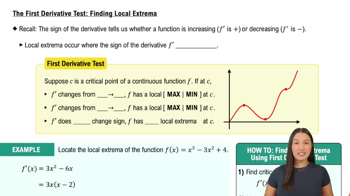Differentiating Implicitly
Use implicit differentiation to find dy/dx in Exercises 1–14.
x⁴ + sin y = x³y²
 Verified step by step guidance
Verified step by step guidance Verified video answer for a similar problem:
Verified video answer for a similar problem:



 5:14m
5:14mMaster Finding The Implicit Derivative with a bite sized video explanation from Patrick
Start learning